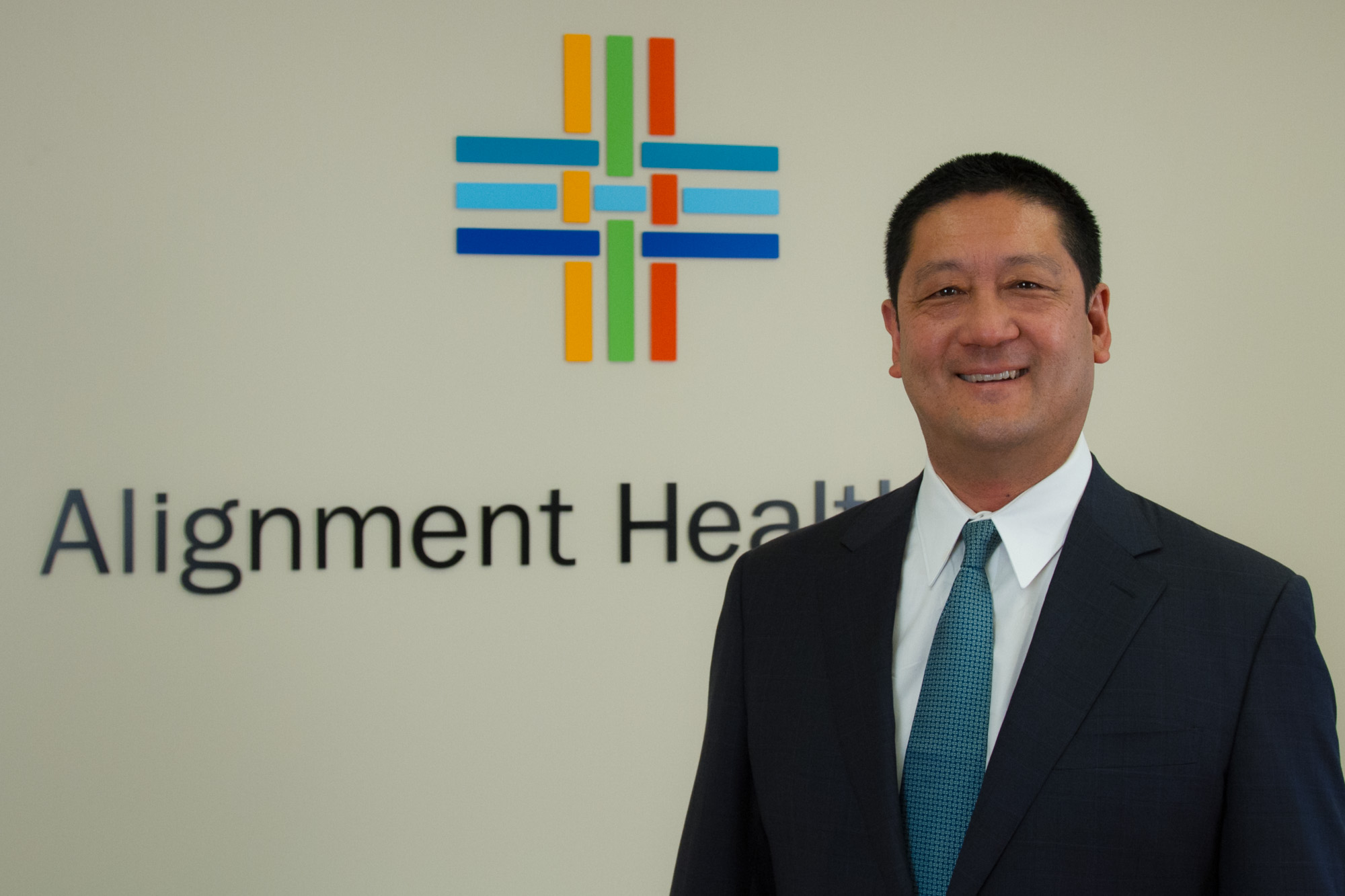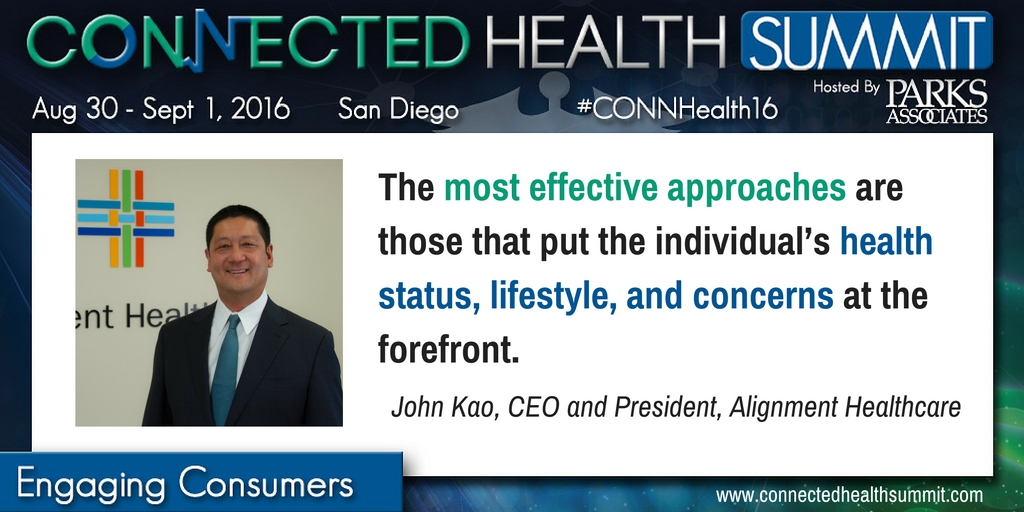The goal is to create a better overall experience for the consumer: Insights from Alignment Healthcare
 John Kao, CEO and President of Alignment Healthcare, answers several industry questions before joining the speaker line-up at the 2016 Connected Health Summit in San Diego:
John Kao, CEO and President of Alignment Healthcare, answers several industry questions before joining the speaker line-up at the 2016 Connected Health Summit in San Diego:
What’s new in 2016 that keeps you upbeat/optimistic about the connected health market?
Health care companies—whether they are delivering care or paying for it—are all looking for solutions that are lower in cost than the acute-care hospital. Because of this, ambulatory care facilities like urgent care and super PCP centers are growing. But the biggest trend we’re seeing is the shift to home-based care. As such, wearable technology and biometric monitoring, telehealth and video medicine are trends where we are making investments. The “smart home,” we think will also start gaining traction. The notion of consumer engagement is still young, but we believe it will ultimately create the type of engagement that will lead to better alignment with the consumer, where, for example, if you lose weight or stop smoking, your monthly premium will be lower. These are all positive developments that keep me upbeat about the future of the connected health market.
What’s the most effective strategy/approach you have seen that engages consumers for health and wellness behavioral changes?
The most effective approaches are those that put the individual’s health status, lifestyle and concerns at the forefront. This personal attention and show of empathy help build rapport that make consumers more receptive to learning and understanding the need to make changes in their health behavior. From there, it’s all about supporting the individual—by setting attainable goals, keeping them accountable and celebrating progress. Ultimately, the goal is to create a better overall experience for the consumer that goes beyond clinical outcomes. If we do this well, consumer engagement will follow.
What do you anticipate to happen in 2017-2018 that would have the biggest impact on the connected health market?
Within the population we serve, the connected health market may help bridge the gap between care delivery and payment for that care, but it will be a challenge until Medicare pays prospectively for care, rather than on a fee-for-service model. There is great potential impact as Medicare tests pilot alternative payment models and value-based reimbursement programs such as the Medicare Access & CHIP Reauthorization Act (MACRA), namely in recognizing that care does not need to be delivered in person to be effective and efficient. In the meantime, health care providers will need to explore taking on risk for more cost-efficient ways to manage care without affecting quality of care.

John will participate on the panel "Effective Population Health Management Strategies: Success and Lessons Learned" on August 31, 2016, at 10:45am. Other panelists include AMC Health, Healthways, Humana, and Ginger.io.
For more information on this year's event, including the agenda and speaker list, visit www.connectedhealthsummit.com.
Next: From population health to personalized health by 2018: Insights from Omron Healthcare
Previous: Blue Shield of California: Moving from fee-for-service to pay-for-performance forces players to get in line
Comments
-
Be the first to leave a comment.
Post a Comment
Have a comment? Login or create an account to start a discussion.


